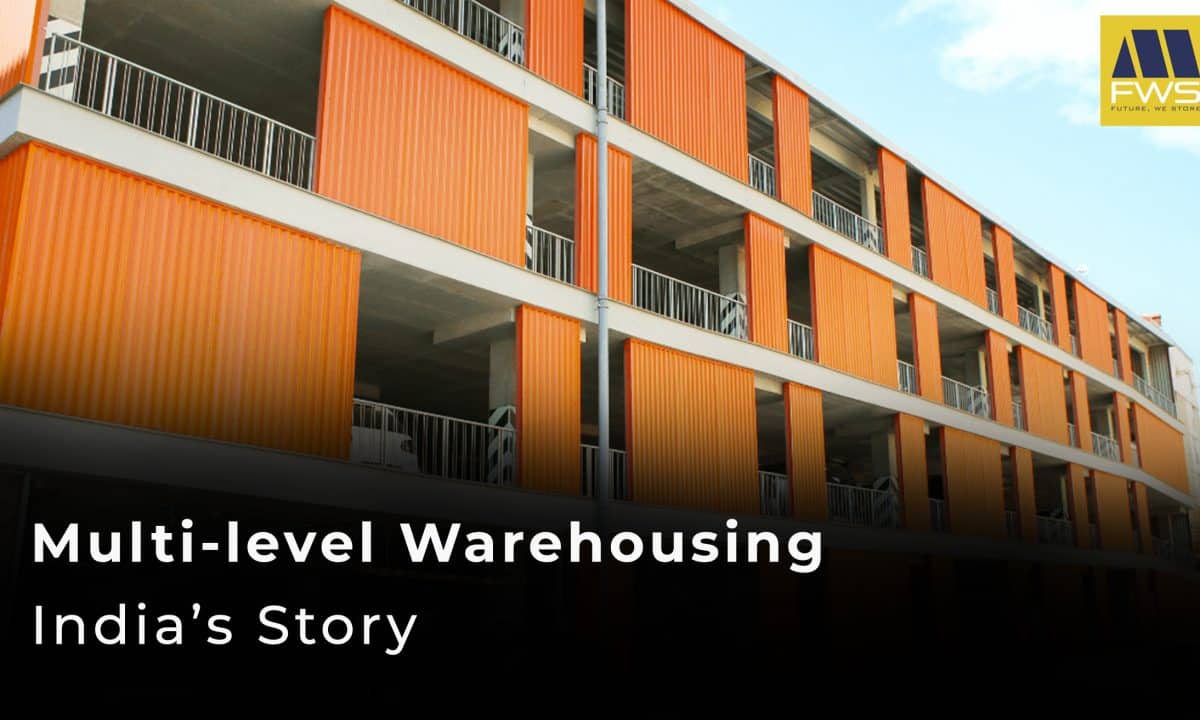Blog

Multi-level Warehousing: India’s Story
In contrast to a standard warehouse, multiple-storey or multi-level warehouses have many storeys above the ground floor that are accessed by ramps, freight elevators, or conveyor systems. The future of storage is turning out to be ramp-up access in multi-level warehouses. They are constructed vertically with large ramps and docks on various floors allowing the simple movement of trucks and trailers to the upper floors. Each level of a multi-level warehouse may function independently, thanks to access ports for cargo loading and unloading. Future Warehouse Solutions is coming up with such kind of vertical warehouses close to the IGI airport, Delhi with ramps for trailers to go up and down the warehouse.
Multi-level Warehouses as the next step in Logistics
Urban multi-level warehouses allow businesses to minimize the high cost of property and maximize the possibilities of the built-up region, which makes it a desirable option for users who want simple access to their core demographic. The growth in e-commerce has increased the need for urban storage and logistics facilities, thus investors and developers are considering multi-level warehouses as the next development in urban logistics.
Multi-level Warehousing in India
Potential:
Indian warehousing market is transitioning towards multi-level warehousing due to growing needs from the e-commerce sector to be close to their customers and effectively utilize the land space. This may increase demand for tech-enabled multi-level warehouses, allowing proper usage of available space in urban areas while also reducing transportation costs and time. Due to their limited land availability and increasing property prices, cities like Mumbai, Bengaluru, and Kolkata have the potential to attract multi-level warehouses.
Challenges and Future:
The Floor Space Index (FSI) is the maximum permissible area that a builder can construct on a particular plot of land. In Indian cities, the permitted FSI for warehouses is lower than the ideal FSI for multi-level warehouses. Lower permitted FSI prevents warehouses from expanding, which restricts cost optimization. However, a multi-level storage system may soon appear in the Indian warehousing sector due to the country’s expanding population, limited available space, and rising land prices.
Concluding Thoughts
Multi-level warehouses within city limits may well be Indian real estate’s next big thing in a market completely transformed in the last two years by the coronavirus pandemic. Since then, fast delivery has become an integral part of the coherent omnichannel plans of eCommerce companies. Tech-enabled multi-level warehousing is already in demand due to the requirements for quicker eCommerce expansion in a post-pandemic environment. These solutions are already in use in South Asian nations including Tokyo, Hong Kong, Singapore, and South Korea.
In such a market environment where fast delivery has been a new mandate, retailers are under pressure to secure warehousing locations close to their customer base. Similar solutions like multiple-storey car parking are fully operational in India’s most congested and land-starved regions. So, establishing multi-level warehouses of five or more storeys with tech-enabled loading on each floor must be the next rational move in this sector.





